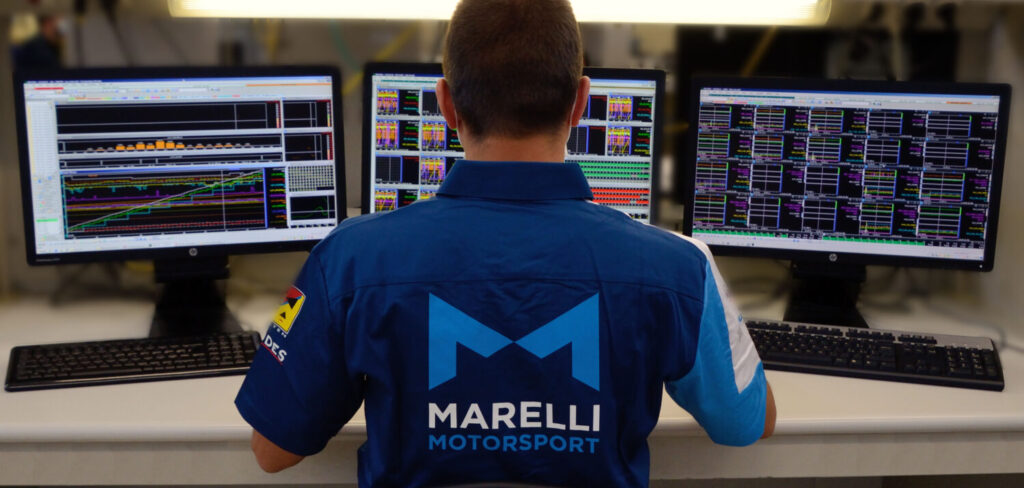Marelli Motorsport and 1NCE, a developer of IoT network services, are joining forces to develop cellular-based telemetry systems for motorsport. Marelli says it is currently engaged in cellular connectivity use-case trials, developing new telemetry systems to collect real-time car and engine data such as acceleration, g force, speed, motor temperature, RPM, alarms and remaining fuel.
Unlike other connectivity solutions, cellular connectivity doesn’t require setting up individual local network infrastructures, with related costs. Standardized cellular connectivity networks already exist worldwide and can easily be utilized for device communication of sensors in a racing environment.
However, Marelli says there is no globally standardized offering that gives customers the ability to easily implement cellular connectivity in their products. As a technology partner of Deutsche Telekom and with its own cloud-native IoT platform, this is where 1NCE comes in, representing the link between cellular telecommunication networks and modern cloud applications.
1NCE’s offering is available in over 100 countries worldwide at a fixed price over all possible bearer technologies such as 2G, 3G, 4G, NB-IoT and LTE-M. This is all available in combination with a management platform that helps to automate device onboarding and management with leading cloud applications. To date, 1NCE has more than 4,000 customers with over five million active connections worldwide.
“By offering globally available and easy-to-implement cellular connectivity, we found 1NCE to be the perfect partner for our needs,” said Riccardo De Filippi, SVP and CEO of Marelli Motorsport. “Combining a worldwide presence and a simple pricing structure, 1NCE delivers the ideal connectivity solution for our upcoming telemetry products. Once set up, we can start using them immediately in any of our motorsports locations around the world.”
Alexander Sator, CEO of 1NCE, added, “I’m sure we are the perfect match for Marelli Motorsport, not only when it comes to speed by bringing new solutions to life, but also in terms of minimizing operational costs for connectivity and ease of use.”



